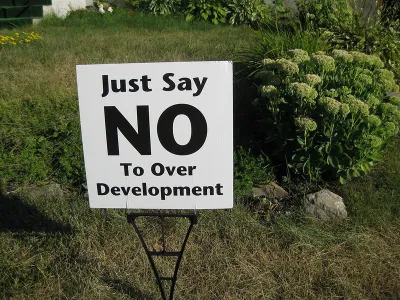Some conservatives oppose new housing on the ground that exclusion will “save” their neighborhoods from poor people. Is there any response to these arguments?

This year, the governor of New York, Kathy Hochul, sought (unsuccessfully) to actually do something about housing costs, proposing a “Housing Compact” which would force municipalities to liberalize their zoning to allow more housing within their borders. If you read planning journals and law reviews, you might think the primary resistance to this proposal would be from urban socialists, but in fact, the most aggressive opposition came from relatively moderate suburbs, especially in Long Island.
This opposition is based on a idea that some writers pejoratively refer to as “right-NIMBYism”: the idea that new housing is dangerous because it might actually succeed in reducing costs, thus bringing an influx of poor people into a suburb, thus creating crime and white flight. For example, conservative commentator Kevin Williamson writes that politicians such as Gov. Hochul want “to wreck the unwrecked neighborhoods to make up for all of the housing stock in areas that have been rendered undesirable or positively unlivable.” More decorously, Judge Glock defends zoning because allowing lower-income people into a suburb allows them to get “high-quality services by skimping on low-quality property with lower taxes.”
Right-NIMBYism is based on fear that zoning change will be too successful: that by reducing housing costs, deregulation will lead to an influx of crime-creating, non-taxpaying poor people into suburbia. By contrast, left-NIMBYs claim that new housing actually increases housing costs, and that zoning actually protects the poor from gentrification. (I have responded to their arguments in a variety of articles).
It seems to me right-NIMBYism is harder to combat than left-NIMBYism. Left-NIMBYs, to the extent that they really believe their arguments, can sometimes be persuaded that the law of supply and demand applies to housing. But right-NIMBY arguments aren't really based on objective concerns about the public good; rather, they are based on fear and self-interest.
Admittedly, one right-NIMBY concern—the idea that change in the status quo equals the end of suburbia—is an obvious lie. There are plenty of suburbs in the Sun Belt with more apartments and far lower rents than Long Island, and many of them are as desirable as any other suburb. But from a typical suburbanite's perspective, status quo bias might make this argument unpersuasive: even if you don't think that Great Neck will turn into the South Bronx, why take a chance?
But even if you assume all rich suburbs will stay rich, right-NIMBYism is hard to combat. Here's why: in the short run, some homeowners benefit from high housing costs. As housing becomes more and more expensive, their homes become more valuable. But suburban homeowners get an extra benefit: when housing prices go up enough, more people become homeless. Visible homelessness makes urban centers less desirable, because unhoused people are more numerous and visible in downtowns full of homeless shelters and social services. And as downtowns become less desirable, suburbs look better in comparison, and become even more valuable.
So, in the very short run, restrictive zoning essentialy gives suburban homeowners a license to print money. By creating a regionwide housing shortage, they can not only make houses more valuable generally but, by making downtowns less desirable, make their suburban property especially valuable. So why should anybody support change?
One possible argument is that free-market principles support less or no zoning. But since most homeowners are not ideologues (or, in New York's suburbs, even conservative or Republican), this is not likely to persuade many.
Another possible argument is that even if it is rational for each individual suburb to maximize home values, it is not rational for the region as a whole. When housing costs reach the levels of downstate New York or coastal California, sooner or later people start moving to cheaper parts of the nation. And where people move, jobs will eventually follow. When jobs go away, sooner or later, the tax base goes away, and exploding home values are canceled out by exploding property taxes and declining government services.
This argument requires homeowners to look more than fifteen minutes into the future. And that's the hard part.

Analysis: Cybertruck Fatality Rate Far Exceeds That of Ford Pinto
The Tesla Cybertruck was recalled seven times last year.

National Parks Layoffs Will Cause Communities to Lose Billions
Thousands of essential park workers were laid off this week, just before the busy spring break season.

Retro-silient?: America’s First “Eco-burb,” The Woodlands Turns 50
A master-planned community north of Houston offers lessons on green infrastructure and resilient design, but falls short of its founder’s lofty affordability and walkability goals.

Test News Post 1
This is a summary

Analysis: Cybertruck Fatality Rate Far Exceeds That of Ford Pinto
The Tesla Cybertruck was recalled seven times last year.

Test News Headline 46
Test for the image on the front page.
Urban Design for Planners 1: Software Tools
This six-course series explores essential urban design concepts using open source software and equips planners with the tools they need to participate fully in the urban design process.
Planning for Universal Design
Learn the tools for implementing Universal Design in planning regulations.
EMC Planning Group, Inc.
Planetizen
Planetizen
Mpact (formerly Rail~Volution)
Great Falls Development Authority, Inc.
HUDs Office of Policy Development and Research
NYU Wagner Graduate School of Public Service


























